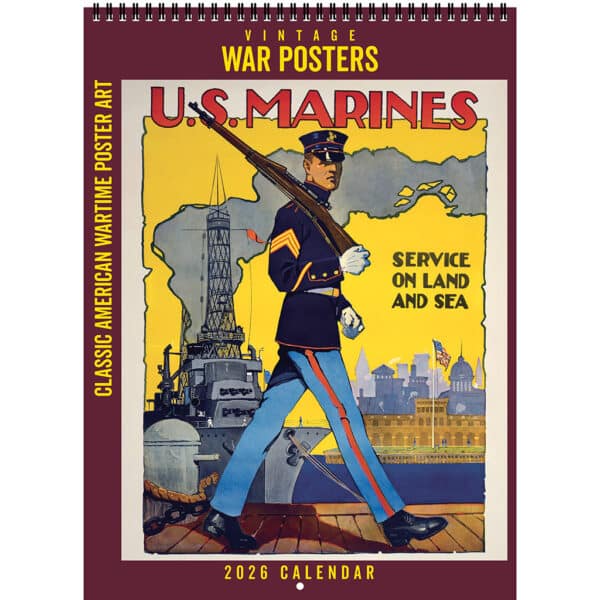16-month hanging calendar of frame-ready vintage musical movie poster art + commentary
Get ready to sing and dance with your favorite old musical films each month with the Asgard Press 2026 Vintage Musicals Deluxe Wall Calendar, a collection of faithfully reproduced vintage movie posters from the 1940s – 1970s. These classic posters showcase the musical cinematic entertainment of an earlier era, complete with all the glitz and glamour of the big stars on the big screen. Musical movies of this era transported audiences to a world of song, dance, and enchantment. From the lavish productions of MGM to the energetic choreography of performers like Judy Garland, Fred Astaire, and Elvis Presley, these films captured the essence of joy and escapism. With memorable tunes, dazzling costumes, and elaborate sets, musicals like “Camelot,” “Blue Hawaii,” and “Funny Face” became timeless classics, leaving an indelible mark on the history of cinema. These movies not only showcased the talents of their performers but also served as a reflection of the cultural aspirations and dreams of their era, providing a respite from the realities of the time. Each month you can enjoy the poster art of one of these iconic films, accompanied by in-depth commentary telling the story behind each musical. With its large vertical format of 11×15 inches, our wire-bound deluxe wall calendar opens to an impressive 11×30 inches. The perforated design allows for easy removal of each month’s image, making them a perfect fit for standard 11×14 inch frames. Generously sized grid spaces leave plenty of room to keep track of all your appointments, reminders, and events. Bring the optimism of old Hollywood to your walls each month and organize your days with song and dance.
- 2026 16-month wall calendar – September 2025-December 2026 – Use this calendar right away with mini-grid page of the last 4 months of 2025
- Features full color vintage posters of classic musical movies accompanied by extended commentary each month detailing the story behind each poster’s film
- Large format opens to 11″x30″ with spacious grid pages for at-a-glance organization of appointments and events, and includes major US holidays and moon phases
- Includes 13 easy-to-remove prints that fit standard 11″x14″ frames for sustainable reuse
- Decorate affordably with trendy vintage artwork and photos
- Plenty of room to write in the grid spaces
- Heavy, archival paper vibrantly showcases each month’s image and prevents bleed-through of pen or marker ink on grid pages
- Perfect for hanging in home, office or classroom
The more calendars you buy, the more you save with our volume discounts!
| BUY THIS MANY | GET THIS DISCOUNT |
|---|---|
| 1 | — |
| 2 | 10% off |
| 3 | 15% off |
| 4 | 20% off |
| 5 | 25% off |
| 6 | 25% off |
When you order 6 calendars, you also receive a FREE CALENDAR of your choice! Just add a 7th calendar of your choice to the cart and the value will be deducted automatically.



























































Reviews
There are no reviews yet.